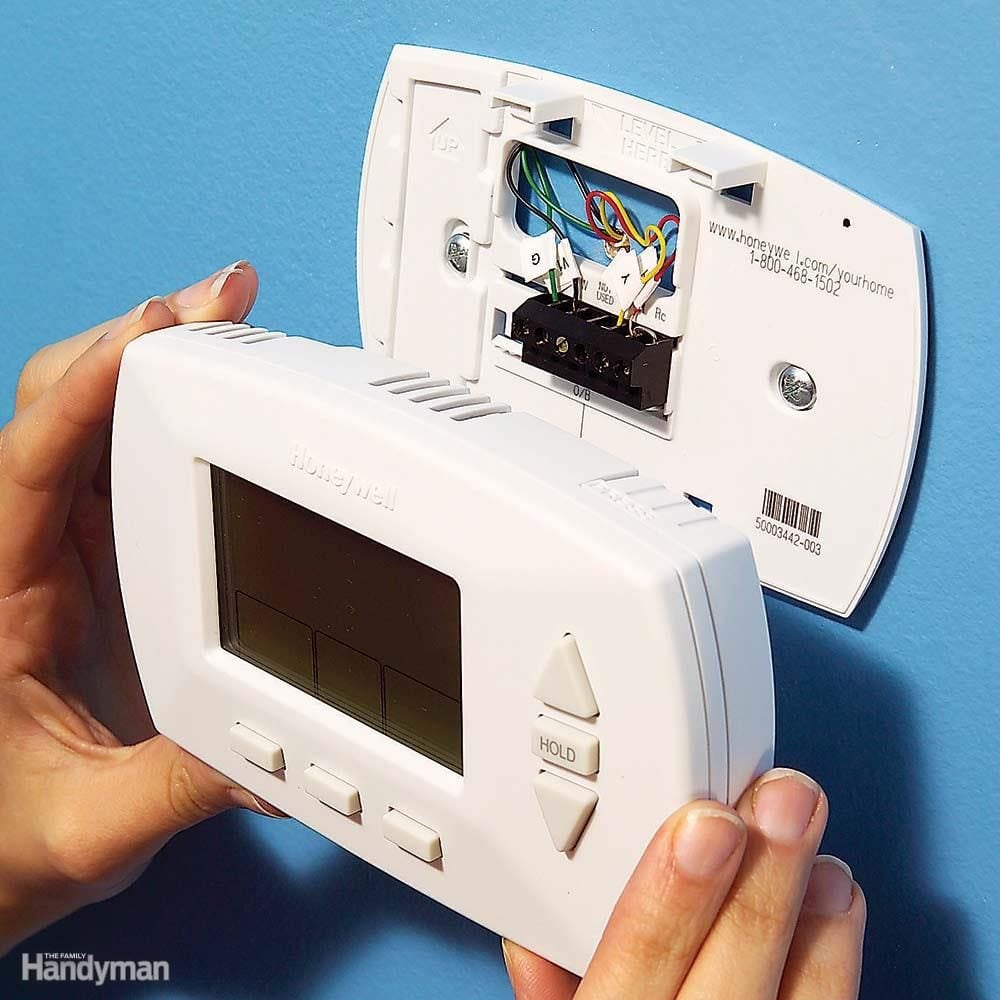It doesn't take much time or money to slash your cooling costs. Just follow these tips for energy savings.
Keep Your Home Cool and Save on Energy Costs This Summer

Finding Air Leaks
Locating air leaks can be tricky. They're often so small as to be hardly noticeable. To find them, follow a trail of smoke.
Close all the windows in the house, turn off all the fans and exhaust fans, and shut off the furnace. Light some incense and walk slowly around the outer walls of the house. Anywhere you notice the smoke blowing away from something or being sucked toward something, there's probably an air leak. Now that you've found it, seal it! Here's how.

Heat-Reducing Window Film

Cover Open Soffits
Builders often put a soffit where they want to put cabinets or recessed light fixtures, and sometimes they use soffits to contain heating ducts. Soffits have a high potential for leakage, especially if they contain recessed lights. Refer to your sketch and dig around in the insulation if necessary to find them. Reflective foil insulation, sometimes called 'bubble-pack' insulation, works well as an air barrier for soffits. It's flexible and only about 1/4 in. thick, making it easy to cut with a scissors. You have to clear insulation from the surrounding wood to get the caulk to stick. Then cover the foil with insulation when you're finished. However, don't put insulation within 3 in. of recessed lights unless the fixture is IC rated (for 'insulation contact'). The rating will be listed on a label inside the recessed can.

Get an Energy Audit
An energy audit entails a series of tests, including the blower door pressure test (shown), that tell you the efficiency of your heating and cooling system and the overall efficiency of your home. On the basis of the test results, the auditor will recommend low-cost improvements to save energy and larger upgrades that will pay you back within five to seven years. Audits take two to three hours and cost $250 to $400, but if you set one up through your utility company, you may be eligible for a rebate.
A basic part of an energy audit is the blower door test. The auditor closes all the doors and windows and then places a blower fan in a front or back door. This blower door test measures the 'tightness,' or air infiltration rate. The pressure and flow gauge shows the difference between the inside and the outside airflow so the auditor can calculate the air leakage rate.

Install a Programmable Thermostat
Setting your cooling system four to six degrees warmer when you're away at work or on vacation and automatically lowering it to 78 degrees when you're home can cut 5 to 20 percent off your energy bill. Mounting a programmable thermostat is a simple DIY project. Follow the manufacturer's instructions for programming it.

Service Your Air Conditioner and Save up to $65 a Year
Roughly half of an average home's annual energy bill (gas and electric), about $1,000, is spent on heating and cooling. Air conditioners placed in direct sunlight use up to 10 percent more electricity. If yours sits in the sun, plant tall shrubs or shade trees nearby—but don't enclose the unit or impede the airflow. Place window units on the north side of the house or install an awning over them.
Keep your window or central air conditioner tuned up so it runs at peak efficiency (to do it yourself, see Cleaning Air Conditioners in the Spring). Every two or three years, call in a pro to check the electrical parts and the refrigerant (expect to pay $150).
If your central air conditioner is more than 12 years old, replacing it with an Energy Star model can cut your cooling costs by 30 percent and save maintenance costs. The payback for replacing a 12-year-old system is typically about eight years. An air conditioner's efficiency level is measured by the seasonal energy efficiency ratio (SEER). The higher the number, the more efficient the unit. A 13 or 14 SEER rating is considered high efficiency.

Use a Leak Detector to Find Drafts
If your home is drafty, use a thermal leak detector (several brands are available online). The battery-operated handheld tool uses infrared sensors to identify spots that are warmer or colder than the surrounding area, signifying an air leak or poor insulation.
Just point the Thermal Leak Detector at windows, walls and ceilings. When the detector finds a cold or warm spot, the LED light changes from green to red (for warm) or blue (for cold).
Of course, you'll still have to do some detective work to figure out what the problem actually is and how to fix it.

Clean or Change AC Filters Monthly

Buy An Energy Efficient Air Conditioner
Paying higher upfront costs for the most efficient unit possible (SEER 14 or higher) makes sense in hot climates since the initial investment will be paid back in energy savings over time. It makes less sense in cooler climates.

Seal Forced Air Ducts
Use special foil tape to seal joints in cooling and heating ducts.

Keep Cool With Shade
Cut AC costs through your own sweat equity by shading your house with trees, trellises and vines. Shading blocks direct sunlight through the roof and windows, which is responsible for about half of the heat gain in your home. Carefully positioned trees and horizontal trellises on the east and west sides can save up to 30 percent of a household's energy consumption for heating and cooling. For an average household, that's $100 to $250 in energy costs annually.
Photo provided by Heather Down istockphoto.




















